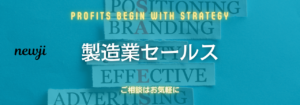- お役立ち記事
- Development of bio-rubber and its environmental impact reduction effect [Eco-rubber market]

Development of bio-rubber and its environmental impact reduction effect [Eco-rubber market]

目次
Introduction to Bio-Rubber
Bio-rubber, also known as eco-rubber, represents an innovative turn in the materials industry, particularly aimed at reducing environmental impacts compared to conventional rubber products.
This material is derived from renewable resources, making it a more sustainable option for industries that are traditionally reliant on petroleum-based products.
As concerns over climate change and environmental degradation heighten, bio-rubber is seen as a promising solution, offering both performance and ecological benefits.
The Basics of Bio-Rubber
Bio-rubber is produced using natural resources such as plant-based oils or rubber sourced from latex-producing plants.
Unlike traditional rubber, which often requires petroleum-derived raw materials, bio-rubber aims to minimize carbon footprints and reduce reliance on fossil fuels.
Advancements in biotechnology have enabled the development of bio-rubber that closely matches the physical properties of conventional rubber, ensuring that industries do not have to compromise on quality or performance.
Environmental Impact Reduction of Bio-Rubber
One of the foremost benefits of bio-rubber is its potential to reduce environmental impacts significantly.
Since bio-rubber is derived from renewable sources, its production is generally associated with lower greenhouse gas emissions compared to conventional rubber.
Furthermore, the cultivation of bio-rubber source plants can contribute to carbon sequestration, further mitigating the effects of climate change.
Using bio-rubber also reduces the demand for petroleum and other finite resources, aligning with global efforts to shift towards more sustainable practices.
Biodegradability and Waste Reduction
A significant environmental advantage of bio-rubber is its improved biodegradability.
Traditional rubber products often contribute to landfill waste, where they take centuries to decompose.
Bio-rubber, by contrast, is designed to break down more efficiently, reducing the volume and persistence of rubber waste in the environment.
Additionally, the production of bio-rubber can incorporate recycling processes, repurposing waste materials from other sources, and thus supporting a circular economy.
Applications of Bio-Rubber
Bio-rubber’s versatility allows it to be used in a wide range of applications.
From automotive parts to medical devices, the potential for bio-rubber to replace traditional rubber is vast.
The Automotive Industry
In the automotive sector, bio-rubber is used in tire production and various parts that require durability and flexibility.
The shift to bio-rubber in tires not only reduces environmental impact but also aligns with the increasing demand for sustainable practices in manufacturing.
Medical Devices
In the medical field, bio-rubber is utilized for products that require biocompatibility, such as gloves, catheters, and other medical supplies.
The natural origins and reduced toxicity of bio-rubber make it an ideal choice for this sensitive industry.
Challenges in Bio-Rubber Development
Despite its benefits, the development and adoption of bio-rubber face several challenges.
Producing bio-rubber on a large scale requires significant agricultural inputs, such as land and water, which might compete with food production.
Furthermore, the initial costs of developing bio-rubber technologies can be high, although these costs are expected to decrease as the technology evolves and scales up.
The integration of bio-rubber into existing manufacturing processes also demands technical adjustments, which companies must be willing to implement to transition from traditional rubber.
Future Trends in the Eco-Rubber Market
As bio-rubber technology advances, the eco-rubber market is poised for significant growth.
Companies are investing in research and development to enhance the properties of bio-rubber and create products that can perform under diverse conditions.
In addition to technological improvements, the market expansion is driven by consumer demand for sustainable products.
Awareness is growing about the environmental impacts of industrial activities, and more consumers are inclined to support brands that demonstrate ecological responsibility.
Policy and regulatory measures across the globe are also creating a favorable environment for the growth of the bio-rubber market.
Legislative frameworks promoting sustainable practices and reducing carbon emissions support the adoption of bio-rubber and similar eco-friendly materials.
Conclusion
Bio-rubber represents a significant step towards achieving a more sustainable future.
Its development and market adoption demonstrate the potential for industrial innovation to contribute to environmental solutions.
While challenges remain, the continued investment in and development of bio-rubber technologies have the potential to transform not only the rubber industry but also the broader materials market.
As companies and consumers embrace sustainability, bio-rubber is likely to play an essential role in mitigating environmental impacts and supporting the planet’s health.
 資料ダウンロード
資料ダウンロード
QCD管理受発注クラウド「newji」は、受発注部門で必要なQCD管理全てを備えた、現場特化型兼クラウド型の今世紀最高の受発注管理システムとなります。
 NEWJI DX
NEWJI DX
製造業に特化したデジタルトランスフォーメーション(DX)の実現を目指す請負開発型のコンサルティングサービスです。AI、iPaaS、および先端の技術を駆使して、製造プロセスの効率化、業務効率化、チームワーク強化、コスト削減、品質向上を実現します。このサービスは、製造業の課題を深く理解し、それに対する最適なデジタルソリューションを提供することで、企業が持続的な成長とイノベーションを達成できるようサポートします。
 製造業ニュース解説
製造業ニュース解説
製造業、主に購買・調達部門にお勤めの方々に向けた情報を配信しております。
新任の方やベテランの方、管理職を対象とした幅広いコンテンツをご用意しております。
 お問い合わせ
お問い合わせ
コストダウンが利益に直結する術だと理解していても、なかなか前に進めることができない状況。そんな時は、newjiのコストダウン自動化機能で大きく利益貢献しよう!
(β版非公開)





